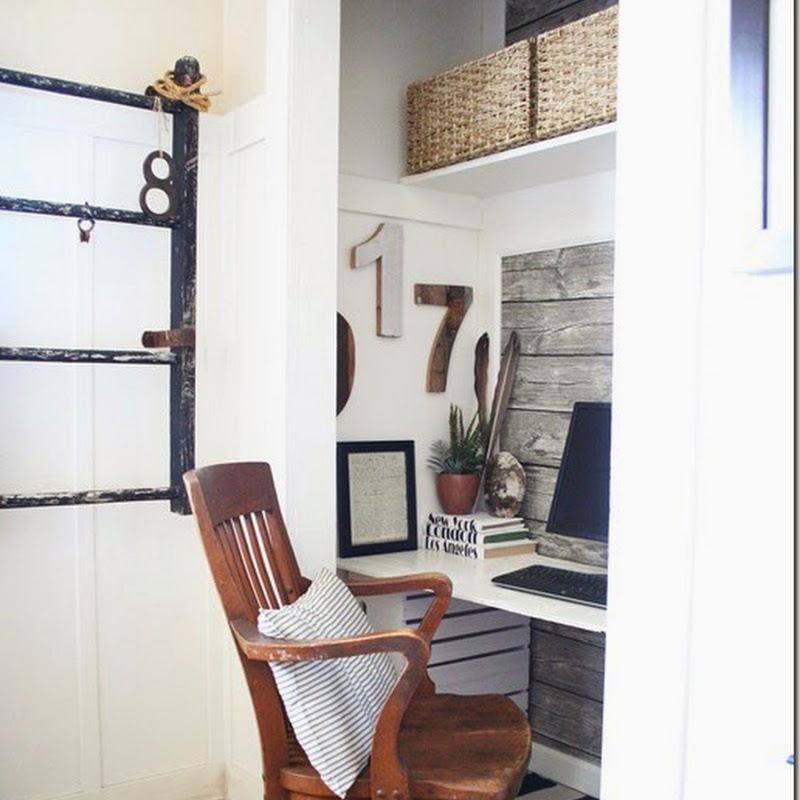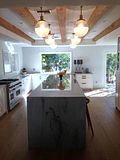This summer has just flown by. I can't believe it is almost time to head back to school. I've spent a good part of the summer at the cottage which doesn't have internet access so posting has been spotty. I did want to finish with my Newfoundland travel posts in case anyone else is interested in visiting this lesser known, but gorgeous part of Canada and wanted some ideas of what there is to see and do in the area.
After a week exploring the northern tip of Newfoundland (which you can read about here) we spent a week in Gros Morne National Park. We actually stayed in three different cabins in the park because it takes several hours to drive from one end of the park to the other and we wanted to be close to different hikes and activities.
I've highlighted four attractions that we particularly enjoyed, but there are countless other hikes and activities that we also thought were fun. Much of the charm of Gros Morne Park is in the smaller activities like visiting the historic houses or walking along a beach and taking in the views and I haven't listed all of these. I also didn't really focus on any particular hikes because we did several shorter ones, but the two days of rain that we had - the only two days of bad weather on our trip, mind you - put a damper on a couple of the longer hikes we had in mind. Next time!
Okay, here goes. Be prepared for a photo feast.
1. Western Brook Pond
Western Brook Pond is a long narrow lake that was formed by the glacier and is surrounded by tall cliffs. At one time it was a fjord and filled with ocean water. As the ice melted after the last ice age, the land rose cutting off the fjord from the ocean and it became a fresh water lake. They have even found ancient whale bones and shells in the pond as evidence that it once was salt water.
Getting to Western Brook Pond involves hiking 3-kms along a trail and boardwalk. The hike is well worth it though, because not only is there a spectacular boat ride waiting for you at the lake, but the wild flowers along the trail are one of the prettiest sites I've seen. In fact, we liked the hike to and from the lake as much as the boat ride.
2. Tablelands
Gros Morne was established as a park because of the unique geological formation of Tablelands where the earth's mantle lies exposed on the earth's surface. The park guide explained that it was a small piece of the mantle from deep within the earth that was thrust up when two plates collided - like a raisin would float to the surface in raisin bread when it is being baked. Exposed mantle is very rare and Tablelands is one of the most notable examples. In fact, it was while studying this unique area that scientists developed the theory of plate tectonics.
The mantle rock in Tableands is composed of peridotite which doesn't have the nutrients to sustain much plant growth and causes it to look like a desert moonscape. Tablelands can be seen from great distances around the southern part of the park because of its distinctive orange colour due to all the iron in the rocks.
3. Green Point
Green Point is another famous geological site. If you weren't keen on geology before you came to Gros Morne, you soon will be because that's what makes the park special. Green Point is famous because of fossils found in specific layers of rock that helped establish the boundary between the Cambrian and Ordovician time periods. In 2000, Green Point received special designation as the Global Stratotype Section and Point by the International Union of Geological Sciences ... which (if I understand correctly) means that Green Point is used as the international standard to designate the boundary between the Cambrian and Ordovician layers of rock.
I do love me some good fossils and geology, but I also love walking along rock beaches, examining sea cliffs, and watching the surf. Fortunately at Green Point you can do it all. The rocks are beautiful with layers tilting up to the sky and wavy sea bottoms preserved in the shale and limestone. We actually went twice to Green Point because the important rock layers are around the corner and only accessible at low tide.
At Green Point, you can also hike the old winter mail trail. Before the road was put through (in 1952) mail was delivered in winter by dog sled using this coastal pathway. I can only imagine how cold it must have been to drive a dog sled along some of those exposed areas. The trail goes along beside the ocean and past coastal ponds and tuckamore trees (spruce and fir trees that have been stunted by the winds and winter weather). It also goes through the forest where the trees have been cut back for the path, but the branches meet overhead giving it a verdant tunnel effect.
4. Lobster Cove Head Lighthouse
Lobster Cove Head Lighthouse was built in 1897 and is a beauty. There is an exhibit inside, but both times we visited it it was closed. We thought the lighthouse was spectacular though, and took some short walks around the area to get different photos. We could also see the lighthouse from our cabin in Rocky Harbour so we have fond memories of it. There's nothing better than seeing a tiny dot of light flashing from the lighthouse as the sun sets.
That's my final post on our visit to Newfoundland. I hope you found it interesting. For our trip, we wanted to see a couple of areas in detail so we chose to stay in two areas for a week each. Lots of people see all the highlights of Newfoundland in two weeks which is also lots of fun, but a different kind of trip. Staying for awhile in just a few places is a wonderful relaxing way to see a place. However, our itinerary might not have worked as well if we had had poor weather as much of what we were doing was outdoors and there were only a few indoor activities to do. We happened to visit Newfoundland during one of their hottest driest summers on record. Yay, summer heat wave!
I got a couple of recipes for local dishes when I was there and want to post about them. I've made the salmon loaf and it was fantastic. I'll post about it soon. Promise!
P.S. In case you missed any of my other Newfoundland posts, you can read about part 1 of our itinerary (here), where to stay (here), what to eat (here), and about the icebergs (here).
































































.png)


















































































































































.jpg)



















































































.jpg)



























Nature truly is beautiful. So are your photos and thanks for sharing them with us. Hopefully we will visit Gros Morne one day. I will be shaing this series with my niece and her husband, who is from the area as you know. Yes, it is hard to believe that summer is over, Labour Day and back to school/work is upon us. Hope your start up goes well.
ReplyDeleteThank you for documenting your Nfld trip. It is one place I must visit in the near future. For a small province, a person could spend a lot of time there.
ReplyDeleteGorgeous photos! It looks like a wonderful trip.
ReplyDelete